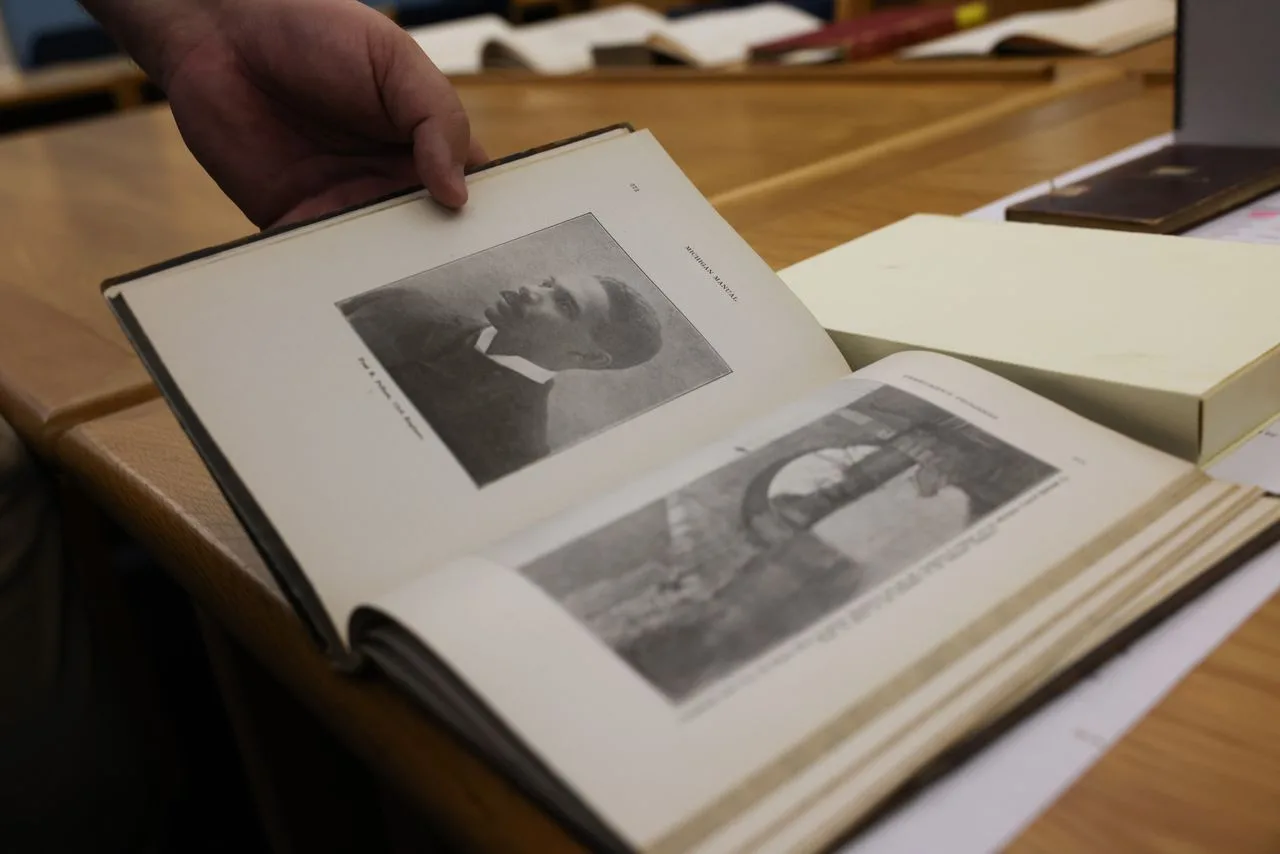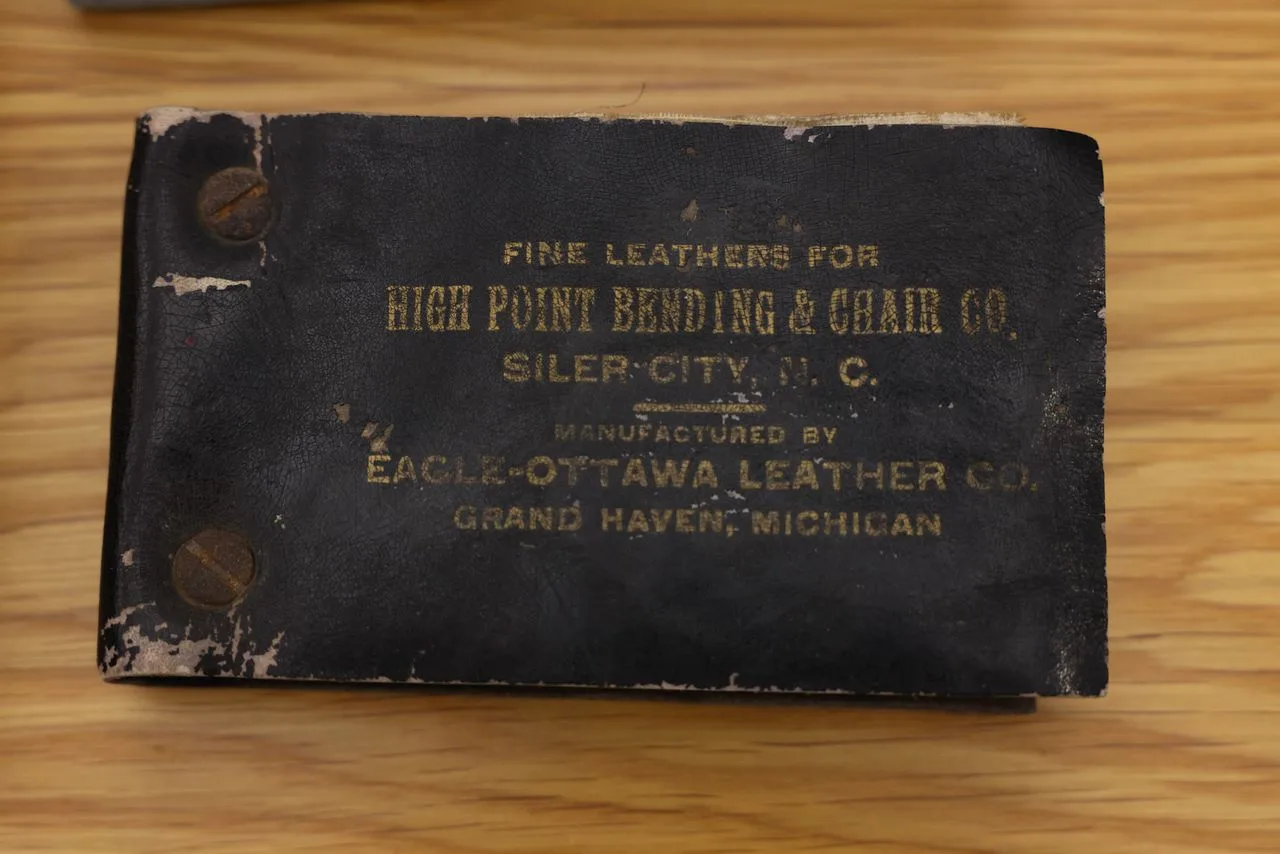From speeches written and bound on manuscripts the size of a penny to law books printed around 1490, there’s no shortage of interesting finds available at the Library of Michigan.
Many of these publications are stored within the library’s rare book vault. The collection, officially established in October 2003, has six main areas of focus, ranging from natural history and travel to Native American culture and exploration.
There are more than 30,000 volumes lining the vault’s shelves – a temperature-controlled room kept barely above frigid to ensure these books are usable for decades to come. If it’s of cultural significance and it deals with the state, chances are the Library of Michigan has it.
Here are a few favorites:
A time before Pure Michigan
While the Pure Michigan brand is now well known among Michiganders, efforts to draw tourism to the state through an advertising campaign isn’t a new concept.
Adam Oster, community engagement librarian with the Library of Michigan, jokingly refers to “The Lure of the Land of Hiawatha” as the precursor to the now national initiative. The copy he pulled from the library’s book vault listed its publication date as sometime in 1935.
Littered across its pages are promotional phrases for destinations, including one that proclaimed Escanaba “the coolest spot in Michigan” and offered travelers a “relief from hay fever.”
What Oster found most interesting about the publication, however, was it’s explicit push for Upper Peninsula tourism – despite the fact the Mackinac Bridge wouldn’t be built for another near two decades.
“This was one of the early publications that were put out in order to showcase the wonderful areas in our Upper Peninsula and getting to see … people fishing or at the Grand Hotel or experiencing lots of different areas that they wouldn’t necessarily see down here in the Lower Peninsula,” Oster said.

Escanaba advertisement found in the “The Lure of the Land of Hiawatha” (1930’s) publication pictured as part of the rare book collection at the Library of Michigan in Lansing, Michigan on Aug. 10, 2023. Santino Mattioli | MLive
Settling the state
When settlers first came to the state, it wasn’t exactly a priority for colonial stories to be kept and recorded. Fast forward to the 1870s, and it became clear this history of early Michigan was dying.
Enter Harriet Tenney, first woman to helm the Library of Michigan and creator of the Pioneer Society. Her work to collect these early stories helped to not only cement her place in state history, but also grow the Library of Michigan like no librarian prior to her had done, said Michigan Documents Librarian Bernadette Bartlett.
“They’re a series of 40 volumes that were published, over time, that have different accounts … about events and people and just what it was like to settle certain areas in Michigan,” Bartlett said. “It’s a fascinating collection. Without the library, without Tenney, this may have taken a very different form.”
Considering there are old Michigan constitutions, laws from when the state was still being settled and legislative records in one location, gaining an idea of what early-Michigan may have been like has never been more accessible.
“I don’t know how many copies of these exist out there. I know we have a pretty good set of them here at the Library of Michigan,” Oster said. “It’s wonderful that this somehow been preserved 100 years, 110 years after some of these were started to publication.”
A ‘census’ of the state’s Black history
Researching Black history in the United States can be a struggle when it comes to historical documents for myriad reasons and much of them revolve around the transatlantic slave trade.
While the “Michigan Manual for Freedmen’s Progress” doesn’t fix that, it offers a glimpse of what life was like in Michigan circa 1915 and earlier for Black residents within its 200-something pages. Its development came exactly 50 years after passage of the 13th Amendment, which made slavery and involuntary servitude unconstitutional, “except as a punishment for crime.”
Copies of the manual exist in circulation outside of the library, though the copy the Library of Michigan has is “one of those original ones that was published in 1915,” Oster said.
Within are snapshots of then-notable houses owned by Black residents, lists of Black soldiers who served in the Civil War, famed singers of the era, and more.
“You can almost look at this as a census of African American people in Michigan,” Oster said. Particularly for those who served in the Civil War, “this may be one of the few places that their names have been documented in honoring their service.”

Flipping through the pages of the “Michigan Manual for Freedman’s Progress” (1915) from the rare book collection held at the Library of Michigan in Lansing, Michigan on Aug. 10, 2023. Santino Mattioli | MLive
Literature as an art. Literally.
Due to the technology constraints early writers had when publishing any kind of novel, be it fictional prose or a book of legal guidance, art was somewhat scarce within early literature.
An 1820′s book called “The Angler,” by Thomas Pike Lathy, showed how artists of the time got creative with their works.
Lathy’s piece uses a technique known as fore-edge art – a scene painted on the edge of a book’s pages so, when set a certain way, it makes an image.
When the book is bent, it shows a fading painting of a man catching a fish; more interesting, Oster added, the painting was somehow made in such a way that no matter how people bent the book, they could always make out the person on the boat.
The work may not, however, even be Lathy’s own. Research of that time shows an appetite for fishing-related books, which may have prompted Lathy to try and pass the longform poem off as his own, according to the Dictionary of National Biography.
“Besides the the characteristics just of the book itself, of it being artwork, is that, I believe, it was also a copy in toto of somebody else’s work according to the the notes that we have in the catalog,” Oster said. “So, it’s an early version of taking somebody else’s work and claiming it as your own.”
The one-time trials of shopping
Now, if you want a new chair for your dining room table, you go to the store and buy one. Or, more likely, you hunt online. One order later and voila, a new dining set.
Not so in the early 20th century, when carpenters of the time had to hawk product through books and pamphlets advertising their goods.
From small-bound books of leather swatches dating back to 1916 to 1930′s magazines featuring what today could be referred to as a travel trailer – advertisements, too, can be found at the Library of Michigan.
Catalogues offer a window to the past. Oster said when and how these were published often have something to say about the styles, trends and attitudes of an era, allowing readers to “see the sorts of things that people … start taking advantage of as they’re traveling across parts of the Midwest and experiencing the wonderful areas that are in both Michigan, and elsewhere.”

“Eagle-Ottawa Leather Co. leather swatch book” (1916) pictured as part of the rare book collection at the Library of Michigan in Lansing, Michigan on Aug. 10, 2023.Santino Mattioli | MLive



